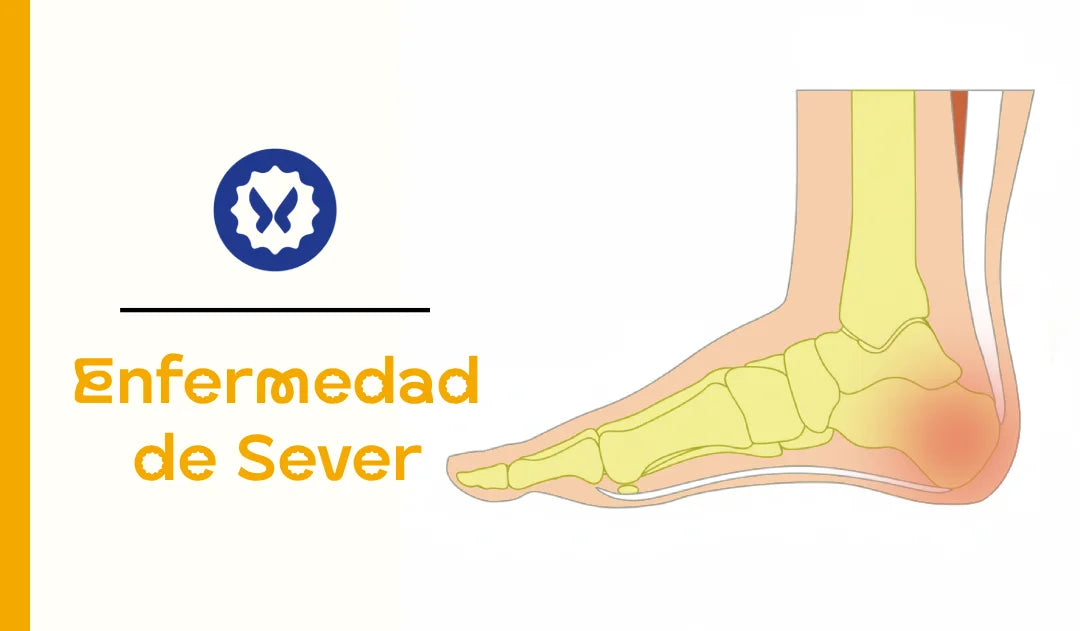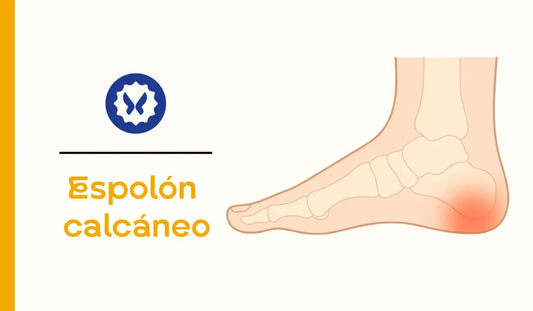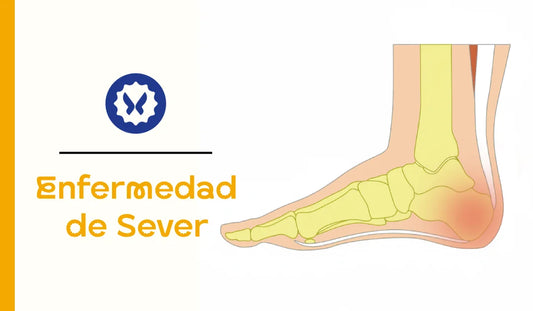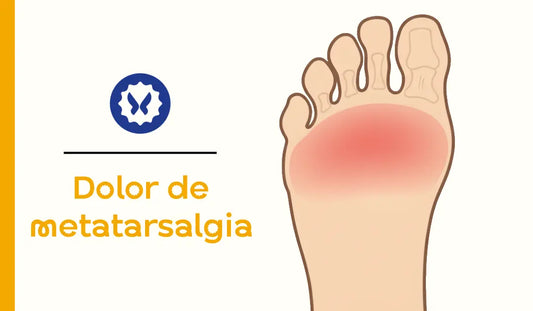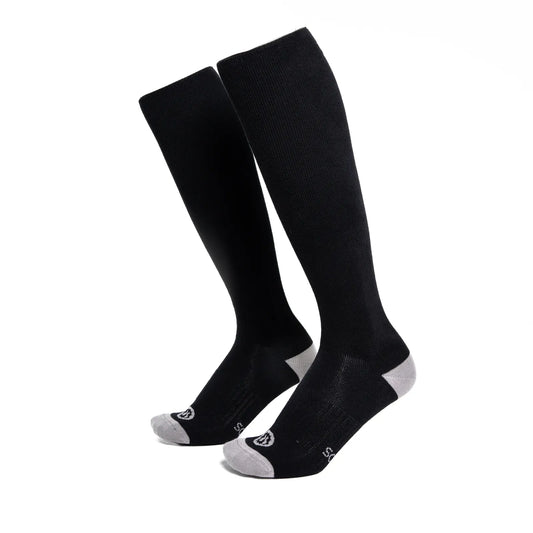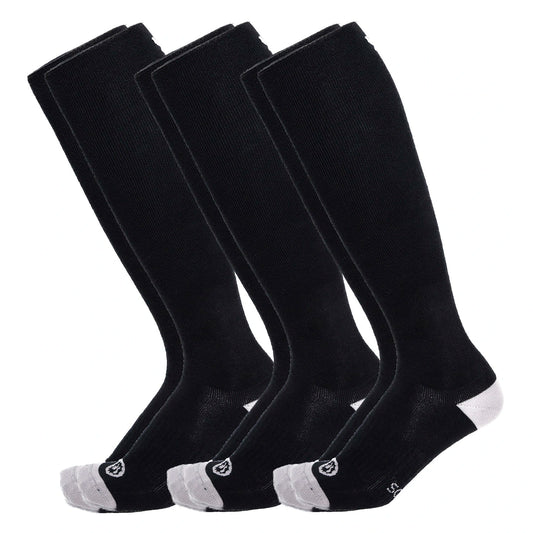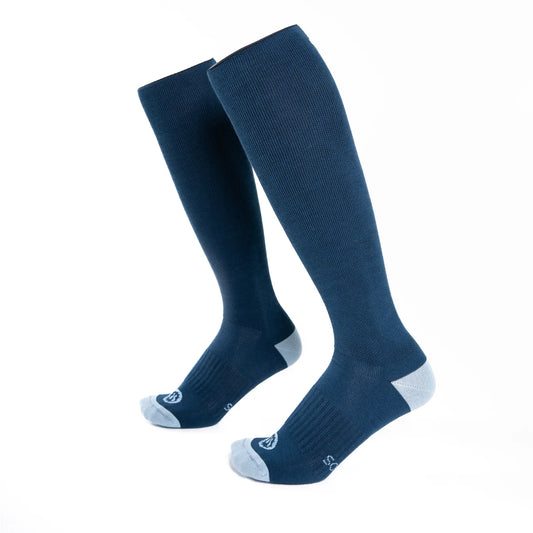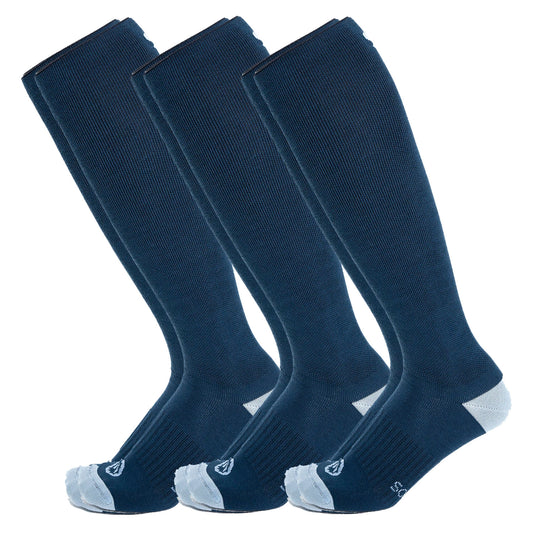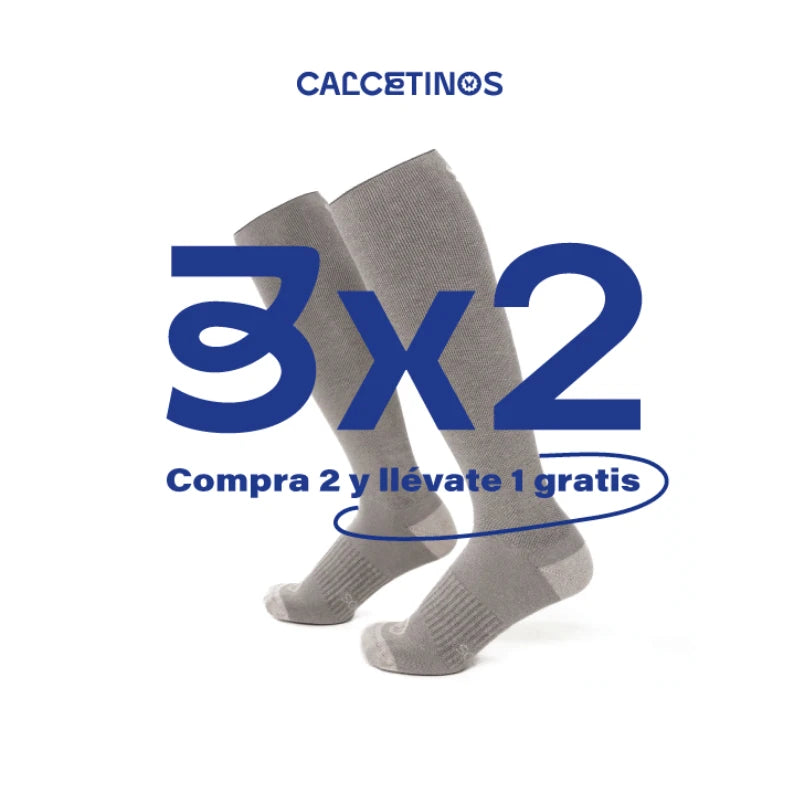Sever's disease is also known as calcaneal apophysitis . It is an inflammatory condition of the heel that is typical of growth and occurs primarily in active children and adolescents, especially athletes.
In adults, similar pain is often due to overuse or plantar fasciitis ; however, many people refer to it as "Sever's disease" for better understanding, since in practice, the sensation is practically the same. In this guide, we'll explain how proper support, daily habits, and healthy compression socks can help relieve heel pain and improve comfort in your daily life.

What is Sever's disease (and why is it called that)
The so-called "Sever's disease" is actually a growth disorder . During development, the heel bone (calcaneus) is not yet fully ossified, and the insertion area of the Achilles tendon can become irritated with repeated impact. This is why it is most common between the ages of 8 and 14 and generally resolves once bone growth is complete . In adults, heel pain often has other causes, especially overuse or plantar fasciitis, although the term "Sever's" is still popularly used.
Most common symptoms
- Pain in the heel (one or both), which increases when running, jumping, or walking long distances.
- Tenderness when pressing on the back or bottom of the heel.
- Stiffness in the morning or after periods of inactivity.
- Occasionally, slight swelling or temporary limping .
Causes and factors that aggravate it
- Rapid bone growth typical of adolescence.
- Sports overload (football, athletics, gymnastics, repeated jumps).
- Shoes with hard soles, little cushioning or too flat.
- Lack of stretching and rest between sessions.
- Very rigid impact surfaces.
Footwear for Sever's disease
Choosing the right footwear can make a big difference if you have heel pain. Look for sneakers with good cushioning that gently cradle your foot and support the heel without squeezing . Avoid models that are too flat or hard , as they don't absorb impact well when walking or running. And if you notice your sneakers have lost their bounce, it may be time to replace them: the midsole also tires over time.
Recommended treatment and care
The good news is that most cases improve with simple care and a little patience. You don't need to stop completely, but you should reduce repeated impacts (such as jumping or intense running) until the pain subsides.
Applying cold a few minutes after activity helps reduce inflammation and soothe the area. You can also do gentle calf and leg stretches to release the tension in the tendon. If you use insoles or wedges, always do so under professional guidance.
And, of course, take care of your feet with comfortable, stable, and well-cushioned shoes: they're the foundation for any improvement.
We summarize:
- Relative rest : reduce repeated impacts (jumps, sprints) while pain exists.
- Local cold in phases of inflammation after activity.
- Gentle calf and posterior chain stretches ; pain-free progression.
- Insoles or wedges if recommended by a professional.
- Footwear with cushioning and stable heel support.
In addition to physical support, maintaining the circulatory health of your legs can help reduce inflammation and pain . In the following section, we explain how graduated compression can contribute to your relief routine.

If you're interested in other forefoot conditions and their relationship to tissue and pressure, you may find it helpful to read about metatarsalgia and Morton's Neurome .
How Socks Can Help You If You Have (or Think You Have) Sever's Disease
There's a common misconception that compression socks "squeeze" the foot and can worsen heel pain. With Socks, it's different: our compression is gradual and applied from the ankle up , without compressing the sole or heel . This promotes venous return , helps reduce swelling , and provides a pleasant feeling of lightness at the end of the day.

- Healthy and progressive compression : designed to improve circulation without putting pressure on the painful area.
- Ultra-soft fabric and a pressure-free design on sensitive areas of the foot, so there's no chafing or discomfort when wearing them for hours.
- Less vibrations and micro-impacts with each step, feeling of muscle relaxation .
By improving leg support and stability, socks help reduce the small jolts that occur with each step—known as microimpacts—which, over time, can increase the feeling of strain or pain. This provides extra support so your feet work less and recover better.
Dynamic Socks: Healthy compression with extra cushioning
The Dynamic model adds extra cushioning throughout the sole , ideal if you spend long hours on your feet or have a series of active days. The goal is to provide stable comfort without direct pressure on the heel, working alongside your footwear to make every step more comfortable.
Dynamic Socks
14-17 mmHg graduated compression focused on the leg, with no pressure on the foot . Wide toe box and fully cushioned sole for all-day comfort.
Buy DynamicAnd if you prefer to leave your foot free? Leg Warmers Socks (coming soon)
Leg warmers offer the same benefits of leg compression, but leave your foot completely free . They're a good option if you enjoy being barefoot or like to apply a little cold to your heel to relieve discomfort. This way, you can maintain circulation without covering your foot, combining rest and well-being in your quieter moments.
What option should you choose if you have Sever's disease?
- Dynamic Socks : These socks add extra cushioning throughout the sole. This extra softness is noticeable whether you spend long hours walking or standing, exercising, or simply want to take better care of your feet on a daily basis.
- Leg Warmers (coming soon): free feet and a fresh feeling. Ideal if you're usually at home or sitting and enjoy being barefoot from time to time.
There's no "best" option : both are valid and compatible. Choose the one that best suits your routine and what makes you feel most comfortable each day.
“Your feet support you every day. Give them the rest they deserve.”
Small gestures that help relieve pain
- Active breaks and microstretches throughout the day.
- Activity progression : gradually increase volume and intensity.
- Sufficient hydration and rest to promote recovery.
- Rotate footwear and check cushioning regularly.
- Gentle self-massage of the calves and plantar area, without causing pain.
Socks for teenagers: sizing and recommendations
Socks are designed for adults , but some athletic teens may wear them if their anatomy fits within the measurements. Size S typically fits a foot size 36–39 , with an ankle circumference of 19–23 cm and a calf circumference of 32–36 cm .

If you're unsure about sizes, check out our size guide for more details.
Conclusion: taking care of your feet also means taking care of your well-being.
Sever's disease is a part of growing up and usually improves over time if you maintain support , adjust your load , and maintain healthy habits. The graduated compression of socks can be added to your routine, helping to improve circulation , reduce swelling , and give you that restful feeling your legs and feet appreciate. Discover how it feels to move with more comfort.
This content is for educational purposes only and does not replace medical advice. If pain persists or interferes with your activity, consult a healthcare professional.

